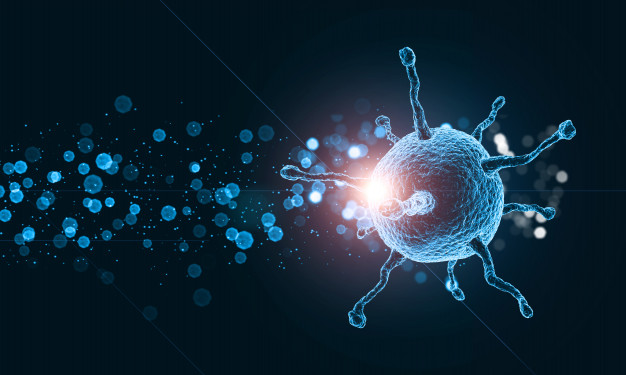Coronaviruses have been making people cough and sneeze for aeons. They are among the many viruses that cause a frequent cold. But not all are so mild-mannered. A few harsh types can lead to severe illness and deaths. Coronaviruses get their name from their shape. These round viruses are surrounded by a halo of spiky proteins. That makes them look a bit like a crown or the corona of the sun. Being termed a coronavirus “is less about the genetics and more about the way it appears under a microscope,” explains Brent C. Satterfield. He is a founder and the chief scientific officer of Co-Diagnostics. It’s a firm based in Salt Lake City, Utah, and in Gujarat, India. It is producing new tests to diagnose coronavirus infections. The hereditary makeup of these viruses is formed of RNA. RNA is a single-stranded chemical relative of DNA. Genetically, coronaviruses can be quite different from one another. Some types have more variations between them than humans have from elephants, Satterfield notes. Four major types of these viruses exist. They’re known by the Greek letters alpha, beta, delta and gamma. Only the alpha and beta types are recognised to infect people. These viruses circulated through the air. And just four of them (known as 229E, NL63, OC43 and HKU1) cause between one and three in every 10 cases of the common cold. Coronavirus illnesses manage to be fairly mild and affect just the upper airways (nose and throat). But some more severe relatives can induce lethal disease. Two of the most well-known of the deadly types are responsible for SARS and MERS. Each of these diseases has caused global disruptions in the past. In December 2019, another virus joined these dangerous cousins. Scientists are calling it SARS-CoV-2. The name reflects this germ’s close similarity to the original SARS coronavirus. On February 11, the World Health Organization began calling the disease this new virus triggers COVID-19. That stands for coronavirus infection in 2019
These coronaviruses provoke severe infections by first latching onto proteins that reside on the outer surface of lung cells. Those attachments help the viruses penetrate far more strongly into the airways than their cold-causing kin, notes Anthony Fauci. He guides the U.S. National Institute of Allergy and Infectious Diseases. It’s in Bethesda, Md. He points out that COVID-19 is “a condition that makes more lung disease than sniffles.” The ability to destroy the lungs can make these coronaviruses especially serious
People are not a source of coronavirus diseases. SARS, MERS and COVID-19 are zoonotic. That means that people originally catch the virus responsible for some animal. Bats are often thought of as the source of coronaviruses. Yet even they seldom pass the virus directly on to humans. SARS first jumped from bats into raccoon dogs or palm civets. Once in those animals, the virus leapt humans who had come into contact with the pets at markets selling live animals.
Coronavirus Symptoms
Reported illnesses have ranged from mild symptoms to severe illness and death for confirmed coronavirus disease 2019 (COVID-19) cases.
The following symptoms may appear 2-14 days after exposure.*
●Fever
●Cough
●Shortness of breath
Read in detail about symptoms of coronavirus in our next article
Human Coronavirus Types
Coronaviruses are named for the crown-like spikes on their surface. There are four main sub-groupings of coronaviruses, known as alpha, beta, gamma, and delta. Read more in our detailed article about types of corona virus
